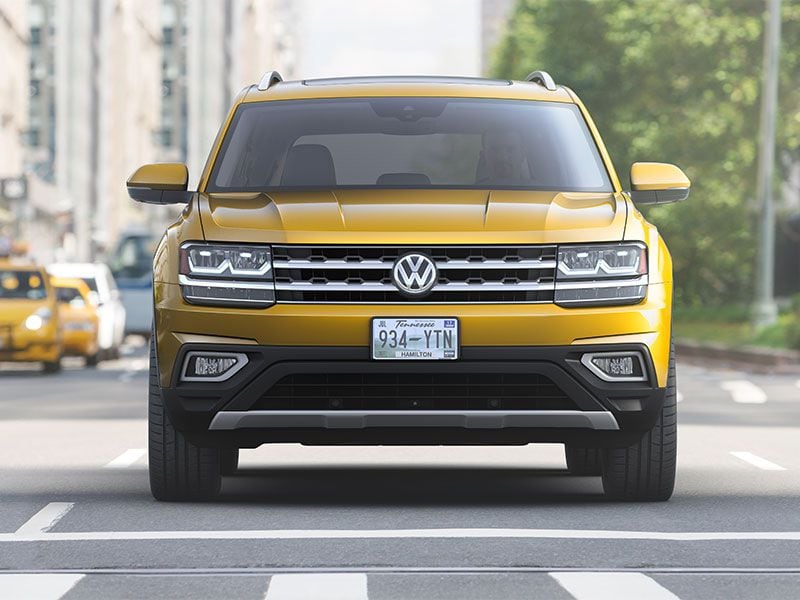Recent Articles
Popular Makes
Body Types
10 Tips for Buying Last Year's Car Model

bigstock Cars on dealership lot ・ Photo by Bigstock
Buying a previous-year (or “leftover”) model year car can be a great way to get a good deal on a brand-new vehicle, though it does have its pitfalls. If buying a leftover is something that appeals to you, these ten tips will help you through the process.
1. Know what's coming next year.
The days of the yearly model change are long gone, and the chances are that a car from the previous model year will be nearly identical to the current one. But automakers do update their vehicles from time to time, so it's good to know if the previous year model you are thinking of buying is the same as the current car, or if it's an entirely different version. There's nothing wrong with buying a vehicle that is about to be replaced, but if your prospective new car comes just before a major change, you should negotiate a better deal.

Photo by Volkswagen
2. Evaluate the trade-offs.
If you are considering a car that has been replaced by a newer version, consider the trade-offs you will be making. Updated styling is no big deal, but freshly-updated models often have significant improvements to infotainment, connectivity and safety equipment. Think carefully; you may decide that having the latest-and-greatest technology is worth the additional cost.

Photo by Bigstock
3. Be flexible.
If you're shopping for a leftover, you'll need to be flexible: You're limited to what is available on the dealer's lot, and that means you might not get the exact colors or options you want. And there may well be a reason why some previous-model-year vehicles have been sitting on the forecourt for so long—no one wants the purple SUV with a manual transmission and no air conditioning.

Photo by Bigstock
4. Do your research.
If you're on the lookout for last model year's car, you may need to do some homework. If you have a particular model in mind, ask the dealership when the next model year version will arrive. Check out several dealerships to get an idea of what type of previous year vehicles are still on the lot; you can save time by calling around to dealerships and ask about leftover inventory.

Photo by Bigstock
5. If you find a car you like, don't hesitate.
If you find a desirable vehicle, be prepared to move quickly. Dealerships often offer incentives to their salespeople to move older stock, and if the car has a desirable combination of features, it may not stay on the lot for long. Typically, we advise car buyers not to give any credence to a dealer who says “This deal is only good today”—but in the case of a leftover car, a deal that is here today may be gone tomorrow. When you go out shopping, be prepared to buy right away.

Photo by Bigstock
6. Plan to keep your car for a while.
One disadvantage to buying a leftover is that, on paper, it's already a year old—and that means it has taken a year's worth of depreciation. If you're planning to buy the car (rather than lease it) and trade it in within three to five years, you might be better off with a current model year car, as the depreciation hit on a year-old model might be more than you save on your purchase price. Depreciation levels off after a few years; if you keep the car for six years or more, it probably won't make a difference.

Photo by Bigstock
7. Make sure your new car is really new.
A new car is one that has never been registered; if the car has been used as a “dealer demo” or a service loaner and already has miles on it, it may be considered a used car, which means you'll be a year or so into the new car warranty. Before you sign, verify that the new car warranty won't take effect until your date of purchase.

Photo by Bigstock
8. Bargain hard.
There's a reason leftover cars are discounted: Not only are they harder to sell, but chances are the dealership is paying finance charges on the vehicle. Every day the car sits on the lot, it costs the dealership money. This is a bargaining chip that works in your favor—remember, you're helping the dealership by taking the car off their hands!

Photo by Bigstock
9. Look at the whole price, not the payment.
Some dealers concentrate on the monthly payment rather than the total cost. If a dealer says he can sell you last year's model for $50 per month less than this year's model, that should get your Spidey-senses tingling; he could do the same thing by extending the term of the loan. Make sure you negotiate on the total retail price of the car and not just the monthly payment—that way you can be sure you are getting a good deal.

Photo by Bigstock
10. As an alternative, consider a lightly-used car.
If you're okay with buying a year-old new car, why not consider a two-year-old used car? A car that has been registered and has some miles on it will have taken a big depreciation hit, and therefore will cost you less money. Nowadays, cars are so well built that most two-year-old, 25,00-mile cars still have at least another 100,000 miles' worth of trouble-free service. If you can do without the new-car smell, you can save even more money.

Photo by Bigstock